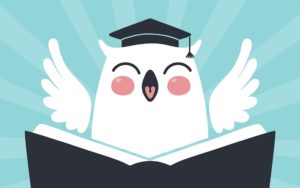
After reading John Medina’s book, Brain Rules, I started thinking about the implications of Medina’s brain rule and other information about sleep. Medina tells us that people fall into three kinds of sleepers:
Larks, Hummingbirds and Night Owls.
Larks often get up before 6 am and report feeling more alert and productive before lunch. Breakfast is usually listed as their favorite meal. Ten percent of the population are larks.
Night owls make up twenty percent of the population while reporting being most alert around 6 pm and having their highest productivity in the late evening. Dinner is their favorite meal and they rarely want to go to bed before 3 am, or get up before 10 am.
Hummingbirds make up the other seventy percent of our world and cover the spectrum of waking and sleeping hours between the lark and night owls.
Since I’m a lark–early to bed, early to rise–I’ve always wondered why some people who tend to be chronically late or tired just don’t go to bed earlier or get up earlier. Most of my life I’ve thought it was a matter of self-discipline. What I now see is perhaps our sleep habits reflect a built-in biological device to make sure that someone in our community or “tribe” is always awake and on “guard.”
It makes sense that until the past 50 years or so, human society needed someone to be up and about to watch over the home fires, and to make sure the deer didn’t eat next year’s food supply.
It may be that humans are designed to work in shifts, and that’s the reason twenty percent of us are night owls, meaning people who prefer going to bed as the sun, and the larks, are getting up.
As we look at children in our classrooms who tend to fall asleep during the school day and who appear to become more alert after lunch, twenty percent of the population would translate into being five night owl children out of a classroom of twenty-five. In a school of 600 students, that translates to 120 students–four to five classrooms. With a million people, we could have a city of 200,000 night owls.
Most teenagers tend to be night owls to some degree.
Teens also need more sleep than an elementary-age child. Circadian rhythms in teens tend to be off the normal twenty-four hour cycle by around one hour, meaning that a teen has a sleep cycle that is continually changing from lark, to hummingbird, to night owl status, every twenty-four days. It’s amazing that any of us make it to adulthood.
As I reflect on several children I know who had difficulty functioning in the classroom, I can see now that these children were night owls.
In our world, night-owl adults can choose work or college classes to fit their natural biorhythms. Night-owl children, though, may struggle through their school days, having trouble focusing, attending to the tasks at hand and keeping their sleep-deprived selves under control. Loss of sleep affects attention, executive function, working memory, mood, ability to work with numbers, use of logic and motor dexterity.
Research shows that night-owl adults who try to fit into an 8 to 5 world suffer ill health affects, such as a higher incidence of of high blood pressure and health issues related to sleep deprivation.
Is it time to think about creating systems that take into account these different natural sleep cycles?
Could Attention Deficit Hyperactivity Disorder, ADHD, be correlated to being a night owl, or living in a night-owl family and not being a night owl?
Twenty percent of our population is a lot of square pegs trying to fit into round holes. Where can our night owls play?
